NX300h style polarizing, spirit electrifying
Filed under: Weekly test drives, Autos
By John Gilbert
The whole automotive world is chasing the global stature of hybrid dominance established by Toyota and its upscale Lexus arm. And some are making large gains, and might even be passing the electric-assist pace-setter. But the Toyota-Lexus dynamo is not about to relax and give up its place on the pedestal.
The 2018 Lexus NX300h may be Exhibit A.
Since Lexus nor doesn’t have a dealer in Northern Minnesota, but several in the Twin Cities a couple hours south of Duluth, a lot of customers make the trip for the uplifted style. We can still admire the features of the Lexus NX300h from afar, and ponder how it might fit into a Great White North scenario. I got a test week for a closer examination,
The Lexus NX300h is loaded with impressive features, and while it is subtle in its performance, the NX300h all-wheel drive runs around on hills and curves in the summertime as though it is a cure looking for a disease. With the right winter tires, a front-drive SUV probably wouldn’t have any trouble, but all-wheel drive simply assures a competent driver to make it through the worst blizzards the Duluth area can generate.
For the price — ranging from $38,000 to $48,000 — there are a lot of AWD competitors, even within Toyota’s guardianship, but the NX300h has emerged from the tangle to put on display the most contemporary feature offerings from Toyota’s vast hybrid storehouse.
Its drivetrain has a 2.5-liter, 4-cylinder gas engine connected to electric power from the corporate Hybrid Synergy Drive, and as the latest version of Toyota engineering skill, the combined output of the 2.5 gas engine and the battery-pack juice comes to 194 horsepower — more than enough to send the NX300h rocketing on its way.
Toyota had long been the stubborn promoter of nickel-metal hydride battery packs, but now the Lexus models and some Toyotas have gone upscale to the new lithium-ion battery packs, capturing power more efficiently, making it go longer, and recharging swiftly.
The shape and contours are what they call polarizing. You love it or hate it, with no in-between. Personally, I really admire the new look, with its signature grille and all the slashed contours of the sides and rear. It comes with an electronically-controlled CVT (continuously variable transmission), which may annoy some hard-core driving enthusiasts with the droning feel of acceleration.
My wife, Joan, and I took the NX300h on a trip halfway across Minnesota, from Duluth to Brainerd and back, to watch the NHRA drag races, and we found the accommodations very comfortable and smooth on the highways. We also registered 33 miles per gallon, which doesn’t seem mind-blowing for a 4-cylinder-and-hybrid set-up, but when you consider that it is an all-wheel-drive SUV that will actually tow up to 2,000 pounds, it becomes more impressive.
Naturally the NX300h has all the latest connectivity and driver-aid systems, such as lane departure warning and assist, and a larger nav screen with an updated audio system, and also LED headlights.
Like its Toyota kin, this Lexus model has top safety ratings and a retained value estimate of 55 percent after five years of ownership.
Base price on the NX300h is $38,335, and as-tested it came to $47,165 with all the added-on devices, such as cross-traffic alert, navigation system and 10-speaker premium sound. Another interior trademark of recent Lexus SUVs and cars is the touchpad on the console, with a handy little pad to allow you to rest your right palm while your fingers cavort about the touchpad summoning up audio, navigation, messages and all other sorts of current connectivity.
Of course, you can also compare the NX300h to the GX, LX, RX and new UX for size variations, although all of them have that similar identifying look. Polarizing. The NX300h, however, can make the others jealous with that hybrid system, and I think the rich finish of the interior panels, such as the seats and dashboard and console, are the best in the Lexus group.
I always prefer the agility of a more compact SUV, given a choice, and while the NX300h has a sporty, compact appearance because of all the contours and curves, it has surprising interior room in the bargain.
EcoSport SES ‘deja vu’ is not entirely the same
Filed under: Weekly test drives, Autos
By John Gilbert
Sports is guilty of beating a good phrase into being trite, such as with the great line, “deja vu all over again,” which Yogi Berra once said, but now is used so regularly by baseball broadcasters that it’s doubtful they even realize that it’s redundant. Ironically, it might apply here, this week.
If this review seems redundant, maybe it’s because you just read about the Ford EcoSport about three months ago, but the deja vu is not happening all over again.
I got to test an EcoSport Titanium with front-wheel drive back in April, and now I’ve recently gotten an EcoSport SES with 4-wheel drive. But there is a lot more than just the engine and trim to differentiate the two, so it’s not really a repeat performance.
For this one, I asked my wife, Joan, to take a drive in it just for here always-sought impressions, and she wasn’t kind. “It’s a dog,” said Joan. I suggested she should give it another try, and use the steering-wheels to paddle-shift the 6-speed automatic, while stomping harder on the gas.
She did, and afterward she said: “Still a dog.”
Talk about redundant. I must allow for her to be right, though, and maybe I give small engines the benefit of the doubt for being able to keep up with larger ones in traffic, and overlook such chinks in pedigree. Maybe some of both.
The EcoSport Titanium we drove in April got mixed impressions, but for good reason. As Ford’s smallest utility vehicle, it had surprisingly good acceleration with only a tiny 1.0-liter 3-cylinder engine, thanks to the EcoBoost turbocharger. But, tiny or not, that engine only comes with front-wheel drive, so it seemed silly up in the North Woods when a late snowstorm accentuated that it was front-wheel drive only — no 4×4.
But now we’ve gotten through July, and the last trace of snow is long gone, fried out of our memory by our foray into what we might call Global Warming Sunstroke Season — 90-degree heat in Minnesota — and the EcoSport SES that arrived as a follow-up came with 4-wheel drive. Go figure. I heard a report from Minneapolis, 2 hours south of Duluth, that through July, they had recorded 17 days of 90 or over, usually a rarity.
The EcoSport SES with 4WD costs only a thousand more, at $25,325, than the fancier Titanium 3-cylinder with FWD, which lists for $24,380. But you lose the conversation-piece of the 3-cylinder 1.0, for the more commonplace 2.0, although with the turbo to handle the extra duty of making all four wheels churn.
An interesting aside: The 2.0 turbo’s 160 horsepower leaves behind the 1.0’s little-impact 123 horsepower, but when it comes to torque, the 2.0 has 146 foot-pounds and the little 1.0 a surprising 148 foot-pounds!
Not that the numbers matter. Of more significance is how it feels, which is where Joan’s assessment might sting. The EcoSport looks to me like a subcompact sedan, but it is classified as an SUV, or more accurately a CUV (crossover utility vehicle). So if you’re going to make and sell me an SUV or CUV in Duluth, Minnesota, make sure it’s a 4-wheel-drive model, OK?
Granted, a good FWD vehicle with the best winter tires (Nokian, anyone?) can go anywhere in any blizzard, but all things equal, you get more efficient blizzard-beating with 4WD or AWD, or whatever you choose to call it on any particular vehicle. To say nothing of the peace of mind feeling that comes along when a blizzard hits and you know you can barge through it.
Frankly, I do appreciate the EcoSport’s utility. It has surprising room for something that looks so stubby — aerodynamic, yes, but still stubby — to have so much available room to haul a couple other adults in the rear seat and to stow groceries or luggage in the way-back, inside the hatch.
Ah, the hatch. When is a hatch not a hatchback? When it’s an EcoSport SES with a side-opening rear door. Maybe Ford wanted to cater to the reputation of U.S. buyers to not want a hatchback, but this one is hinged on the left side, with the door handle on the right, and then look out, because you have to step back to avoid the wide-swinging door.
As a comparatively tall vehicle, there is plenty of headroom, even with the large sunroof, and the stowage might be misleading if they count cubic feet all the way to that high ceiling. There also is plenty of room for housing all the latest connectivity SYNC features, and safety stuff to alert you to blind-spot intruders and to help avoid backing into cross-traffic.
I was disappointed with the fuel economy, which is estimated at 14 city and 36 highway, but I found it unlikely to get it up to 30 in my driving. I also didn’t find the little 3-cylinder approached its EPA estimates, and getting a mini-sized SUV with a tiny engine should at least assure you of lofty mileage.
The sport-tuned suspension in the SES version of the EcoSport does make it handle in a nice, flat, firm attitude around curves or tight corners, and the larger 2.0 4-cylinder has a chance to shine. But you’d be wise to hit the left paddle a couple times and drop down to third or even second if you want anything resembling spunk to be delivered from your little gem.
If you don’t, you won’t have anything at all to stand on as evidence to debate your wife when she suggests the vehicle should be required to wear a collar with a name-tag.
New Compass pays tribute to fallen FCA leader
Filed under: Weekly test drives, Autos
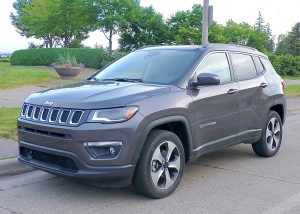
Jeep’s new Compass is truly a global exercise, with an engine of South Korean, Italian and U.S. heritage.
By John Gilbert
While driving a 2018 Jeep Compass for a week in Northern Minnesota recently, I quietly inscribed another chapter in the ongoing refinement of the Jeep family into my memory bank.
This time, it was as a tribute to Sergio Marchione, the automotive executive of the year for any year, or every year. Marchione died unexpectedly two weeks ago, far too young at age 66. A thoroughly engaging personality brimming with charisma, Marchione had pulled off a creative deal to take over Fiat and the bankrupt Chrysler Corporation by merging them together into FCA — Fiat-Chrysler Automobiles.
That was in 2009, and he met a couple of legal challenges to gain full control of Chrysler without spending anything. He then separated Dodge trucks into Ram, separate from Chrysler-Dodge cars, where Jeep had always been. Resolutely, he guided Ram and Jeep into being the No. 1 and 2 profit-makers for FCA, lifting both Chrysler Corporation and Fiat out of the red in less than a decade.
In the process, the renamed FCA steadily improved and refined both Ram and Jeep models, adding new models from both Fiat and Chrysler, while upgrading all the cars in the organization. I had the chance to talk to Marchione on a couple of occasions, and found him refreshingly direct, candid, and willing to answer any and all questions. The introduction of the Alfa Romeo Giulia and companion Stelvio SUV a year ago was a huge plus for the corporation. Driving the new Ram pickup proves it to be possibly the most refined pickup in the industry.
On the Jeep side, renovations of the entire line included an all new compact Renegade, and a companion Fiat 500X, plus an all-new Cherokee, and, a year ago, an all-new Compass.
Then suddenly, the alarming news came that Marchione had gone to a hospital in Zurich, Switzerland, for “shoulder surgery” and that he would not be able to return to work as FCA’s CEO. Then, suddenly again, the news came that he had died. Indications are that he had mostly kept secret that his shoulder surgery was to treat a soft-tissue sarcoma, an invasive type of cancer in his right shoulder. During the surgery, Marchione suffered an embolism — a blood clot — that caused him to fall into a coma. He never came out of it.
All of that sad news has put FCA into some sort of a spin, with questions about the company’s future coming from everywhere. And it is into that climate that I got a Compass delivered to me for a week-long test.
Jeeps always are fun to drive, especially if you have an area where you can do some serious off-road driving. Not necessarily rock climbing stuff, but just taking on remote woodland trails and terrain, where you’d never venture in a normal car. I guess that’s part of it: Jeeps are not normal.
Decades ago, I really didn’t like Jeeps, and wondered why those who did, did. They were rattly, suffered from frequent maintenance issues, and even when new seemed on the verge of starting to show off their lack of refinement. Then they came up with the Cherokee, which was the first Jeep I really admired. Oh, you have to admire the Wrangler, which seemed proud to show off its World War II heritage, but only off-road.
The Cherokee came in under the Wagoneer, a large and very undependable creature that could nuisance you to the point of distraction even in a week’s time. I’ve previously relayed the story of a Grand Wagoneer I was testing in mid winter and my wife and I drove to a high school hockey game and parked about a block from the arena in Minneapolis. After the game, we were walking back and I heard a car horn honking, constantly, without interruption. I mentioned to Joan how some poor so and so had his horn stuck on a 10-below zero night. We turned the corner, and it was our Wagoneer test vehicle, its horn blaring loudly. We pulled the wires to stop it, then found the battery was dead and we had to get a jump start. Afterward, I reconnected the horn wires and found it wouldn’t honk when I hit the horn, but it would honk every time I turned left!
Anyhow, the Cherokee grew into the Grand Cherokee, to make room for a smaller Cherokee, then came the rest of the family, including the Patriot, Compass, and assorted other vehicles of varying sizes.
The new Cherokee comes with three engine choices, one of which is a new 2.0-liter turbocharged 4, which is the result of a green-lighted bold move by Chrysler engineers to develop a new small engine on American soil — one of the qualifications for his Fiat operation to gain full rights to Chrysler.
The Compass, meanwhile, stands in testimony to where Jeep specifically and FCA in general have gotten under Marchione’s fine and forceful hand. Not only is the body shape and design pleasing, the interior is vastly improved, and it is now a fine place for a driver or passengers.
But the perfect example of FCA is under the hood. Read more
VW Atlas and the quest for blueberry pie
Filed under: Weekly test drives, Autos
By John Gilbert
Where will it all end, this apparent runaway escalation in number and size of Sport-Utility Vehicles? For Volkswagen, the end is here in the form of the large, and extremely spacious Atlas.
I’m on the record as being in favor of the smallest vehicle that is big enough, but our test drive timing was perfect, because we were taking four adults to find the perfect piece of blueberry pie. We needed the room, because we were embarking on a nearly 2-hour trip to Ely, Up North on the edge of the Boundary Waters Canoe Area Wilderness, where it was Blueberry Festival time.
The Atlas is the largest vehicle Volkswagen has ever built, and it is a new dimension from a company that made its impact by building compact, fuel-efficient and fun cars, such as the Beetle, Golf, former Rabbit, Jetta, and on up to the larger Passat and longer Sportwagon.
We loaded up a new Atlas with four adults, my camera bag, spare hiking shoes, a windbreaker/rain jacket each, just in case, and a cooler full of sparkling Perrier and iced tea, and we headed off with a half-dozen CDs in the console for our second trip in a couple weeks from Duluth to Ely.
There’s something about Minnesota blueberries in the middle of summer. They thrive, while they struggle in some other areas of the country. Up North, you find two varieties of blueberries — the large, marble sized prizes raised carefully by nurturing gardeners, and the little tiny blueberries growing wild in the woods. There is no question the tiny ones have unexcelled intensity in their flavor, but you have to spend a lot of time down low to the ground to find the beds where they flourish.
In any case, the various places that make and sell fresh blueberry pies could charge anything they wanted for a slice of those delicacies. And even though the Chocolate Moose restaurant has closed, we wanted to go right up to the large weekend festival that fills Ely’s city park with all sorts of handiwork. When we first walked in to the crowded square block site, we spotted the facility that sold various light foods and also proclaimed boldly: “Blueberry Pie.”
We were patient, leaving the best for last. It was a hot day, but we could wander around the many displays and hold off on satisfying our quest. We did hit the kettle-corn stand for a large sack of their specialty, and when we heard some fine harmony from a nearby stage, we wandered over and were thoroughly entertained by Pat Surface with the Boundary Water Boys, performing a series of folk-country classics.
On the way up, we appreciated the way the Atlas handled the many twisting curves and hills through the towering pine trees in and around the numerous lakes and rivers. It is one of the most fun highways in the country, driven moderately, of course. The Atlas comes in base form with VW’s long-proven 2.0-liter, 4-cylinder turbo, while our SEL had the optional 3.6-liter V6 with 276 horsepower and 266 foot-pounds of torque, with plenty of punch to handle those curves. Read more


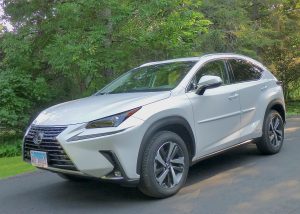
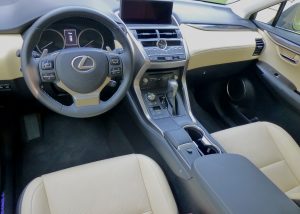
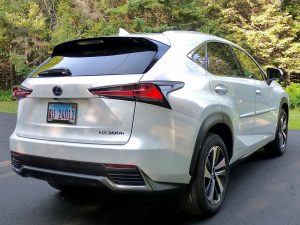
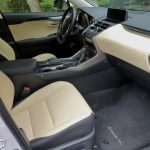
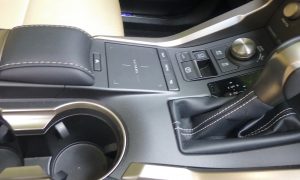
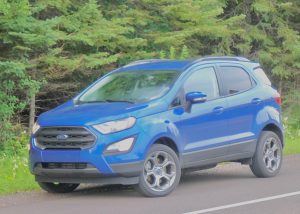
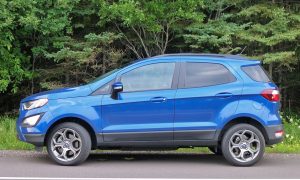
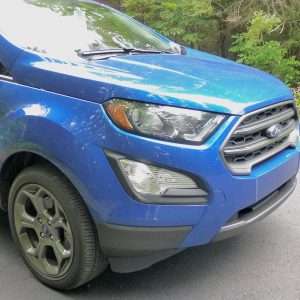
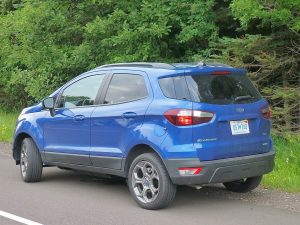
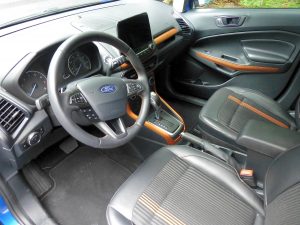
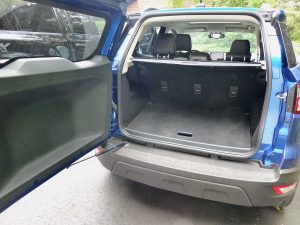
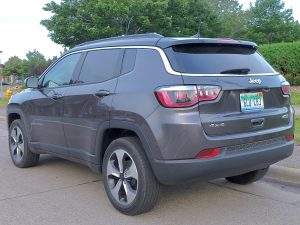
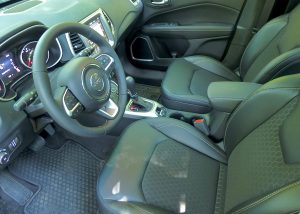
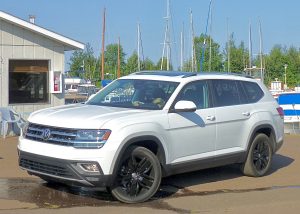
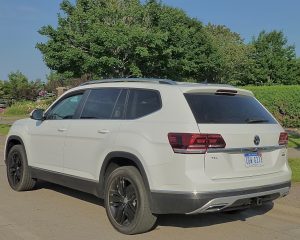
 John Gilbert is a lifetime Minnesotan and career journalist, specializing in cars and sports during and since spending 30 years at the Minneapolis Tribune, now the Star Tribune. More recently, he has continued translating the high-tech world of autos and sharing his passionate insights as a freelance writer/photographer/broadcaster. A member of the prestigious North American Car and Truck of the Year jury since 1993. John can be heard Monday-Friday from 9-11am on 610 KDAL(www.kdal610.com) on the "John Gilbert Show," and writes a column in the Duluth Reader.
John Gilbert is a lifetime Minnesotan and career journalist, specializing in cars and sports during and since spending 30 years at the Minneapolis Tribune, now the Star Tribune. More recently, he has continued translating the high-tech world of autos and sharing his passionate insights as a freelance writer/photographer/broadcaster. A member of the prestigious North American Car and Truck of the Year jury since 1993. John can be heard Monday-Friday from 9-11am on 610 KDAL(www.kdal610.com) on the "John Gilbert Show," and writes a column in the Duluth Reader.